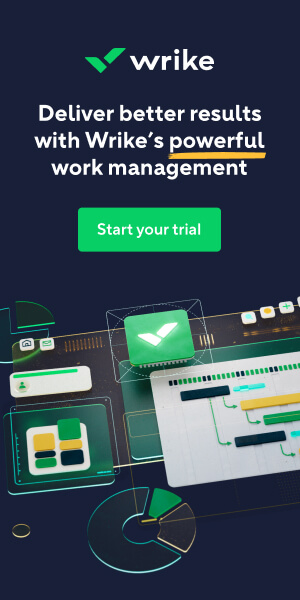Project milestones are reference points in your project’s life cycle that mark important stages of progress. Each milestone allows you to evaluate the project’s incremental progress with scrutiny, while having clearly defined checkpoints to ensure you’re headed in the right direction.
Table of Contents:
How Do You Determine Project Milestones?
You can designate project milestones in several ways. Regardless of how you choose to mark them, there are important requirements milestones need to fulfill:
- Clarify team priorities
- Provide a good overview of progress
- Provide a decisive way to achieve project goals
In the next section, we’ll go over project milestone examples you can consider.
Project Milestone Examples
Project Phases
Marking the beginning and the end date of your project’s phases is a good option for projects that tend to progress in a linear way, such as those following a waterfall methodology. Event planning and construction, for example, tend to move forward methodically after every step is finalized.
| Example: Event Management | |
|---|---|
| Project Phase | Milestone |
| Conception & Initiation | Event Pitch & Proposal (June) |
| Definition & Planning | Event Planning (July-October) |
| Launch or Execution | Event Pre-ion (November-December) |
| Performance & Control | Event ion & Execution (January) |
| Project Close | Event Evaluation (February) |
Important Resources and Approvals
Dependencies can be crucial for outsourced teams working with clients, or in-house production teams reporting to an external board. If your project’s progress is dependent on green lights from stakeholders, you can organize your milestones around completing requirements and gaining approval.
Examples:
- Successful prototype for an investor pitch
- Budget request approval
- Proposed feature set approval
Events
If your project completion is tied to a business or marketing goal, you can plan around launch dates and marketing events. Likewise, consider known operational disruptions when making milestones. Anticipate circumstances that can disrupt your team’s progress, so the project can reach a pre-planned stage of progress before they come.
Examples:
- Target launch date for a product or its features
- Sales events and conventions
- Long holidays that can halt team momentum
- Scheduled outages or maintenance
Core Features and Deliverables
Many software development teams use the agile method because they deal with a lot of ambiguity. Agile projects can evolve along the way, and the final product won’t always end up being what was initially planned. For such projects, forming milestones around core features can be a good solution. This will allow the team to build in increments and welcome important changes as they go.
Examples:
- Minimum viable product (MVP)
- Content complete
- Feature complete
- Software updates
- Post-launch patches and fixes
Critical Tasks
Operational tasks that allow for swifter development can also be marked as milestones. At certain stages, consider prioritizing important plans or resources that will help your team along the way.
Examples:
- Procuring an important development kit
- Completing the project team
- Finalizing project estimates
- Completing the project roadmap
The way you determine milestones can be different for each phase of your project. There will be times when operational and management tasks are paramount. But there will also be instances when progress will rely heavily on your production team. Use a combination of milestone types in a way that fits your needs.
Benefits of Project Milestones
Breaking your project into several parts can be beneficial for everyone involved. Here are the ways milestones can help facilitate project management.
Identify Potential Bottlenecks and Make Better Estimates
By focusing on digestible steps, you and your team can more effectively identify factors that will get in the way of your progress. Apart from tasks, it’s also important to allocate time for contingencies when making project estimates. Anticipate blockers and plan accordingly. This way, their negative effects can be managed and minimized.
Allocate Focus and Resources
Projects can feel daunting and overwhelming. Clear milestones can help your team focus on what’s in front of them, instead of worrying about what they need to do ten steps ahead. Milestones can also help you better line up your resources. At each step, you’ll easily see key tasks and persons that will take center stage. This will enable you to focus on them better and offer assistance when needed.
Align Teams and Stakeholders
As you progress in the project, reporting on the status of each milestone is an easy way to communicate how near (or far) you are from achieving your goals. Project milestones will put your team and your stakeholders on the same page. They clarify priorities, as well as providing tangible success indicators.
Avoid Scope Creep
Having clear goals for each stage of production can help you evaluate the implications of new requests. As a project manager, this can help you spot and filter incoming scope creep. By communicating how a request affects current and future milestones, concerned parties will have better information to assess if it’s necessary.
Introducing project milestones is an effective way to ensure productivity and alignment with business goals. Designate them according to your project’s, team’s, and stakeholder’s priorities. When milestones are done right, you can be sure that you’ll maximize their benefits to your project operations.
Read next: Agile Manifesto Principles & Values 2021
Featured Partners: Project Management Software
If you’re interested in learning more about top rated project management software, the editors at Project-Management.com actively recommend the following:












